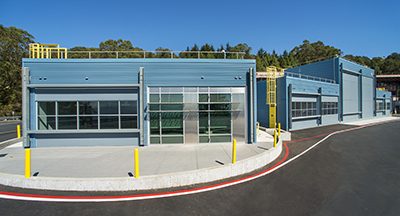Demand Response
Case Study Published in 2021
The Challenge: Evaluating a Control Approach for HVAC Systems to Provide Frequency Regulation
Balancing electricity supply and demand has become challenging for utilities due to increasing penetrations of uncertain renewable generation and new types of large electric loads. One mitigation approach includes demand response - a strategy for automating demand-side load management when grid conditions require adjustment.
The motivation for exploration in this area is to alleviate rising power system uncertainty with low cost, new demand-side resources for reserves.
With renewables, new load types and distributed generation we see the uncertainty at the transmission level accelerating. Typically, supply-side, central generators handle all balancing operations through frequency regulation reserve services, but advances in computing, control, and communications have opened up opportunities for flexible demand-side resources, such as heating, ventilating and air conditioning (HVAC), to supply these balancing reserves.
With funding from the Department of Energy (DOE), researchers evaluated a control approach for frequency regulation from HVAC air handling units fitted with Variable Frequency Drives (VFDs). Additionally, the team evaluated the potential for energy efficiency losses of this type of demand response for ancillary services.


The Solution: FLEXLAB®
Under the auspices of DOE’s Office of Electricity Delivery and Energy Reliability, Berkeley Lab researchers Jason MacDonald and Emre C. Kara teamed with Evangelos Vrettos of ETH Zurich (a science and technology university in Switzerland), and Principal Investigator Duncan S. Callaway of UC Berkeley, to design an experiment to show:
- A demand control hierarchy that’s easily integrated into transmission markets
- Highly accurate frequency regulation reserve service provision
- How to explore the energy efficiency impacts of dynamically-controlled loads for power systems
The team spent five weeks in two of the U.S. Department of Energy's FLEXLAB® facility at Lawrence Berkeley National Laboratory (Berkeley Lab) test cells, creating a unique and and highly effective foundation for experimentation.

The Bottom Line: Hierarchical Optimal Control of Building Loads Can Provide Frequency Regulation Consistent with Electricity Market Timelines
In the experiment, a data-driven optimization-based hierarchical control with a simple physical model of the space was created and tested. It showed it is possible to accurately predict the amount of reserve offered to a market in the day-ahead and manage the temperature set points within a comfortable range, while providing frequency service with an extremely high level of accuracy.
Preliminary results showed that actually following the frequency regulation signal has very little energy impact, likely due to its fast time scale relative to temperature dynamics in the space. When compared to other results in the literature, these fast time scale demand response services may offer more efficient operations.
Download the full case study here: Demand Response
"The value of FLEXLAB is that it gives you the ability to do a controlled experiment with an actual, measured baseline for demand response...
We were able to use the unique properties of FLEXLAB, having identical twin test cells to measure identical physical environments with and without our control. You can’t do that in any other environment."
